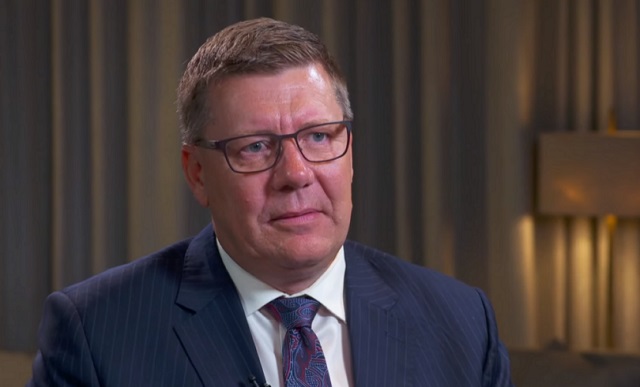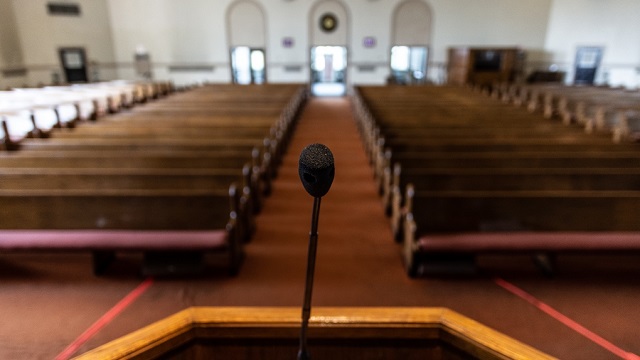Alberta
The Provincial Government’s 2018 report card on its “made-in-Alberta” energy strategy

From the Province of Alberta
Made-in-Alberta plan protects energy jobs
This year, the province fought to get top dollar for our energy resources by launching a made-in-Alberta strategy to build new pipelines and add value by upgrading more of our oil and gas here at home.
Premier Rachel Notley and her government fought to protect workers and the Canadian economy by taking action in the short, medium and long term.
“For decades, Albertans have been talking about getting more value for our oil here at home. It’s time to stop settling for less. We’re grabbing the bull by the horns with a made-in-Alberta strategy to create more jobs, open new markets for our oil and gas, and make more of the energy products the world needs.”
Major boost to energy upgrading
In the long term, the province doubled support for petrochemical upgrading to $2.1 billion, which will leverage private investment that’s expected to help create about 15,000 jobs.
Alberta also created a Liquefied Natural Gas (LNG) investment team to work directly with industry on reducing barriers for securing final investment decisions on export projects that will increase the value of Alberta’s natural gas resources.
In response to strong industry encouragement, Alberta is taking action to explore private-sector interest in building a new oil refinery in the province. Building new refining capacity would create good-paying, long-term jobs for Albertans while helping lower the oil price differential over the long term.
“Large industrial value-add energy investments help provide economic resilience and diversification, and create highly skilled, well-paying jobs for decades. Alberta has abundant feedstock, skilled labour and the ability to refine our resources to high-value products the world needs. There is significant international competition for these projects and for Alberta to compete, government and industry must work together. We commend the government’s focus on ensuring that the value of Alberta’s resources stays with Albertans.”
Fighting for pipelines and market access
The government also continued its fight for new pipelines. Premier Notley’s advocacy was instrumental in the federal government’s decision to purchase the Trans Mountain Pipeline. As well, the Premier continues to fight for needed changes on two federal bills:
- Bill C-69, which would create a new, far-reaching impact assessment process for resource development projects.
- Bill C-48, which would impose a moratorium on oil tankers off the north coast of B.C.
This year, the province also launched the nationwide Keep Canada Working campaign to explain to Canadians the benefits of new pipeline access. The latest push includes a real-time lost-revenue counter to show just how much Canadians are missing out on by keeping Alberta’s energy resources landlocked.
“Under Premier Rachel Notley’s leadership, more Canadians than ever before support this project because they know we shouldn’t be selling our products on the cheap. There’s too much at stake. We will keep the federal government’s feet to the fire so that this project isn’t delayed any further.”
Over the medium term, the government took action to build more capacity for moving oil by rail to clear the backlog and stabilize the market. Upwards of 7,000 new rail cars will come online in 2019 to move 120,000 barrels a day out of the province to markets where Alberta oil can earn the best value possible.
In the short term, Premier Notley protected the value of Alberta’s resources by mandating a temporary reduction in oil production. The decision, in response to a historically high oil price differential, has prevented thousands of job losses and helped restore the value of Alberta’s oil. The price gap is caused by the federal government’s decades-long inability to build pipelines.
Saving industry time and money
A more efficient regulatory process means new oil and gas projects can begin operating faster, creating jobs and maintaining competitiveness. The new process is fairer, faster and more accessible, saving industry hundreds of millions of dollars while making the process more transparent and accessible for Albertans. The new approach is expected to save industry $600 million by 2021, and is helping reduce the regulatory review time for an oil sands project from five years to just 15 months.
Strong energy future in the oil sands
Two major oil sands milestones were also celebrated in 2018. Premier Notley and Minister McCuaig-Boyd joined Suncor for the successful startup of the Fort Hills project, which put 7,900 people to work at the peak of construction and is employing 1,400 people full time now that the project is operational.
The government also highlighted a new $400-million investment in the Long Lake South West project by Nexen, a wholly owned subsidiary of CNOOC Ltd. With leading-edge technology, the project illustrates that a major oil sands producer can be both an energy and environmental leader while showing a long-term commitment to creating good jobs in Alberta’s energy sector.
“The Long Lake South West project demonstrates CNOOC Limited’s long-term commitment to the Alberta energy sector. Our oil sands development is an important component of our global portfolio, and through technological advancements we are pleased to be responsibly growing our production while reducing our overall emissions.”
New jobs, private investment in wind power
Private companies are partnering with First Nations to invest close to $1.2 billion in renewable energy projects in Alberta. This helps create new jobs and continues with record-setting low prices for Albertans. These results showcase Alberta as a proud leader in all forms of energy.
The five successful projects are made possible through the latest phase of the Alberta government’s Renewable Electricity Program. They include investments from homegrown Alberta companies, as well as from new investors from across Canada and around the world.
In total, the new developments will create about 1,000 jobs, attract new economic opportunities for Indigenous communities and bring an estimated $175 million in rural benefits over the life of the projects.
Alberta
Building a 21st century transit system for Calgary

From the Frontier Centre for Public Policy
Calgary Transit is mired in the past, building an obsolete transit system designed for an archaic view of a city. Before the pandemic, transit carried 45 percent of downtown Calgary employees to work, but less than 10 percent of workers in the rest of the Calgary urban area, showing that Calgary Transit doesn’t really serve all of Calgary; it mainly serves downtown.
That would have worked in 1909, when Calgary’s first electric streetcars began operating and most jobs were downtown. By 2016, less than 15 percent of Calgary jobs were downtown, and the pandemic has reduced that number further.
Rather than design a transit system that serves the entire urban area, Calgary Transit light-rail system reinforced its downtown focus. Transit ridership has grown since the city’s first light-rail line opened in 1981, but it was growing faster before the light rail began operating than it has since then. Now Calgary Transit is planning even more downtown-oriented light-rail lines.
Light rail is an expensive form of low-capacity transit. The word “light” in light rail refers not to weight but to capacity: the American Public Transportation Association’s transit glossary defines light rail as “an electric railway with a ‘light volume’ traffic capacity.” While a light-rail train can hold a lot of people, for safety reasons a single light-rail line can move no more than about 20 trains per hour in each direction.
By comparison, Portland, Oregon runs 160 buses per hour down certain city streets. An Istanbul busway moves more than 250 buses per hour. Bogota Columbia busways move 350 buses per hour. All these transitways cost far less per mile than light rail yet can move more people per hour.
Once they leave a busway, buses can go on any city street, reaching far more destinations than rail. If a bus breaks down or a street is closed for some reason, other buses can find detours while a single light-rail breakdown can jam up an entire rail line. If transportation patterns change because of a pandemic, the opening of a new economic center, or the decline of an existing center, bus routes can change overnight while rail routes take years and cost hundreds of millions of dollars to change.
To truly serve the entire region, Calgary Transit must recognize that buses are faster, more flexible, and can move more people per hour to more destinations at a lower cost than any rail system. It should also recognize that modern urban areas have many economic centers and use buses to serve all those centers.
Besides downtown, Calgary’s major economic centers—the airport, the University of Calgary, Chinook Center, the Seton health center, and others—are mostly located near freeway on- and off-ramps. Calgary Transit should identify ten or so such centers geographically distributed around the region. It should locate transit centers—which need be no more than curbside parking reserved for buses with some modest bus shelters—near the freeway exchanges closest to each center.
It should then operate frequent (up to five times per hour) non-stop buses from every center to every other center. A few secondary transit centers might have non-stop buses operate to just two or three other centers. Local bus routes should radiate away from each center to serve every neighborhood of the Calgary urban area.
Since non-stop buses will operate at freeway speeds, the average speed of this bus system will be more than double the average speed of Calgary’s current bus-and-rail system. Transit riders will be able to get from any corner of the urban area to any other part of the urban area at speeds competitive with driving.
Such a polycentric system will serve a much higher percentage of the region’s workers and other travelers than the current monocentric system yet cost no more to operate. It will cost far less to build than a single rail line since most of the necessary infrastructure already exists. While some may worry that buses will get caught in congestion, the solution is to fix congestion for everyone, not spend billions on a slow rail system that only serves a few people in the region.
It is time for Calgary Transit to enter the 21st century. A polycentric bus system may be the best way to do it.
Randal O’Toole is a transportation policy analyst and author of Building 21st Century Transit Systems for Canadian Cities.
Alberta
Alberta backs Saskatchewan in court battle defending parental consent for ‘pronoun changes’

From LifeSiteNews
‘Saskatchewan and Alberta agree that the key figures in children’s lives are their parents, and our provinces are both committed to supporting families and children so that they can work through unique needs together,’ the provinces wrote in a joint letter in defense of parental rights.
Alberta has announced its support of Saskatchewan’s policy requiring parental consent for children to go by different pronouns at school amid a lawsuit against the policy by an LGBT activist group.
On April 9, Alberta Minister of Justice and Attorney General Mickey Amery and Saskatchewan Minister of Justice and Attorney General Bronwyn Eyre revealed that Alberta will intervene in Saskatchewan’s Parents’ Bill of Rights case challenging their new pro-family laws.
“Saskatchewan and Alberta agree that the key figures in children’s lives are their parents, and our provinces are both committed to supporting families and children so that they can work through unique needs together,” the joint statement read.
“Notifying parents and requiring their consent before a child’s name or pronouns can be changed in schools, and before classroom discussions about gender identity and other sensitive subjects occur, ensures that the parent-child relationship is respected and paramount,” it continued.
The pronoun policy is just one part of Saskatchewan’s new “Parental Inclusion and Consent Policies,” which also include provisions that ensure parents are allowed to opt their kids out of sex-ed, and that third-party presentations from groups such as Planned Parenthood will be prohibited from taking place.
After the policies were put forth, LGBT activist group UR Pride Centre for Sexuality and Gender Diversity at the University of Regina, represented by Egale Canada, filed a lawsuit to reverse the pro-family laws.
While a judge has ruled in favor of the LGBT group, Saskatchewan Premier Scott Moe announced in response that he will invoke his government’s notwithstanding clause to protect the legislation from the courts.
The notwithstanding clause, embedded in section 33 of the Canadian Charter of Rights and Freedoms, allows provinces to temporarily override sections of the Charter to protect new laws from being scrapped while higher courts make a determination on the constitutionality of the law.
The case is set to be heard in the Saskatchewan Court of Appeal. During the case, Saskatchewan will now be supported by Alberta, which has committed to intervene in the appeal.
“Alberta will seek to advance legal arguments that Saskatchewan’s use of section 33 of the Charter (the Parliamentary Supremacy Clause) should have prevented Saskatchewan’s Court of King’s Bench from reviewing the constitutionality of the Education (Parent’s Bill of Rights) Amendment Act, 2023 legislation,” the province promised.
“This case has the potential to impact not only parental rights across Canada, but also the application of the Parliamentary Supremacy Clause, which has been an integral piece of the Canadian Charter of Rights and Freedoms and the Constitution of Canada since 1982,” it declared.
Similar to Saskatchewan, Alberta recently introduced its much-anticipated pro-family legislation protecting children and parental rights from the worst results of transgender ideology, including banning doctors from medically ‘transitioning’ children, requiring parental consent for pronoun changes in school, and barring men claiming to be women from women’s sports.
Recent surveys have shown that Moe is acting in the interest of Saskatchewan parents by introducing legislation protecting school children from LGBT propaganda.
According to an August 2023 survey, 86 percent of Saskatchewan participants advocated for parental rights, supporting the province’s new approach to the LGBT agenda in schools.
Furthermore, over 40,000 Canadians have pledged their support for Saskatchewan’s fight for parental rights in the classroom, also calling on all other provinces to follow suit.
Additionally, a Saskatchewan teacher wishing to remain anonymous previously told LifeSiteNews that she feels guilty about keeping secrets from parents and supports the decision to keep parents informed.
“I fear that we are not supporting students or parents when we keep secrets,” she explained. “We have many students using alternate names, which sometimes changes frequently during the year, and then are asked by parents if we were aware of the changes after the fact. I feel responsible for keeping the secret and I don’t think it’s fair. I think schools are already taking on too many ‘parent roles’ and it’s important that parents play the ‘parent role’ not teachers!”
-

 Housing2 days ago
Housing2 days agoTrudeau admits immigration too much for Canada to ‘absorb’ but keeps target at record high
-

 Censorship Industrial Complex2 days ago
Censorship Industrial Complex2 days agoTrudeau’s new online censorship law – Problems with Bill C-63 / the Online Arms Law
-

 conflict2 days ago
conflict2 days agoWestern leadership’s detachment from reality is causing terror and death across the globe
-

 Business1 day ago
Business1 day agoDecarbonization deal opens new chapter in Alberta-Japan relationship
-

 Energy2 days ago
Energy2 days agoNew documentary exposing climate alarmism is the latest victim of Big Tech censorship
-

 Censorship Industrial Complex2 days ago
Censorship Industrial Complex2 days agoNPR senior editor admits extreme bias in Russia collusion, Hunter Biden laptop, COVID coverage
-

 Censorship Industrial Complex2 days ago
Censorship Industrial Complex2 days ago“Minority Report”: The Sequel. A warning to the Canadian Church
-

 National2 days ago
National2 days agoTrudeau drops nearly $200K on airplane food during six-day trip






